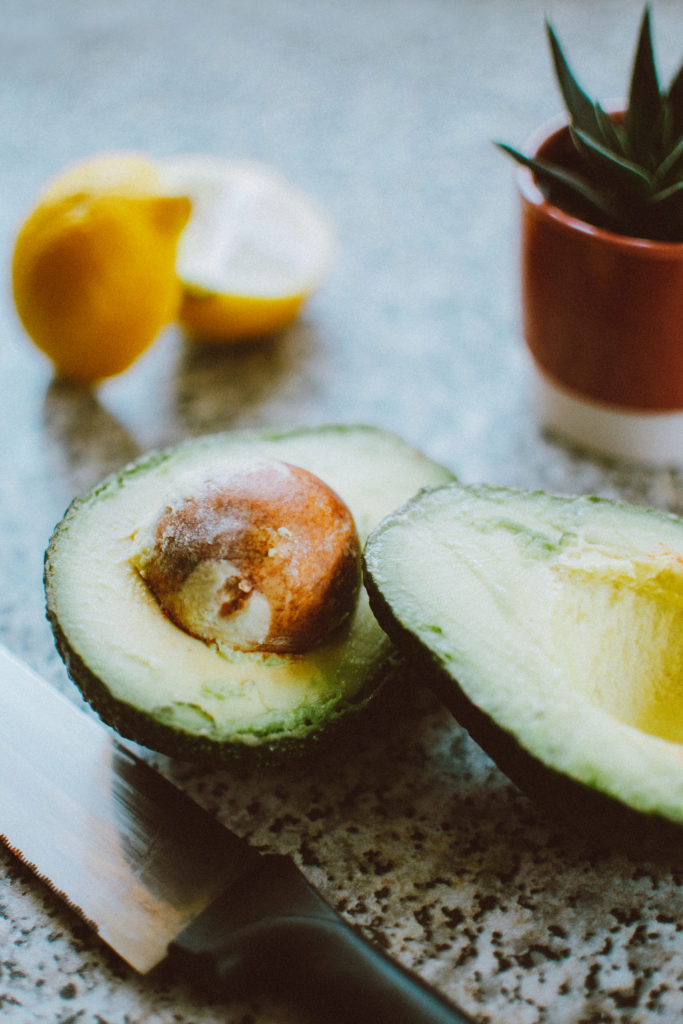In today’s blog, we are going to do a deep dive into fats and explain why some fats need to be included in our diets, and why others need to be excluded. In this post, we’ll also try to tackle how to swap the unhealthy fats for the good ones, and how to maximize the health benefits from the healthy fat sources, particularly from our focus ingredient this week: the avocado!
Fats are Critical!
The first big thing that we need to embrace is that fats are actually quite essential in our diets for several reasons.
- Although some vitamins are water soluble, meaning our body can easily absorb them directly in consumption with most foods and drinks, some essential vitamins are fat soluble, which means our body can only absorb them via fat molecules. Therefore, we need to be taking in fat with the vitamin rich foods, so that our bodies can efficiently absorb those important nutrients.
- It is also important that our body has some amount of fat stores to insulate our body and protect our organs.
- We have more than 10 trillion cells in our body, all are made of fat. In addition, fats are also critical in making the hormones that are needed throughout our bodies to transmit all sorts of important signals from organ to organ.
- Sixty percent of our brains are fat.
Saturated vs. Unsaturated Fats
To better understand what kinds of fats we should be including in our diets, and what fats we need to avoid, we need to understand the terminology that is used when hearing or reading about fats. Let’s face it, the terms that are tossed around when it comes to fats can be confusing, and to understand them, we have to realize that they are based on the chemical makeup of the fats. There is a reason they sound so scienc-y and technical, so let’s try to break them down. “Saturated fat” means that the carbon within the fats is saturated with hydrogen. You don’t have to understand the chemical makeup of fat molecules to read on, but it just is needed to further explain the terms. For a fat to be unsaturated, it simply means that it is lacking one or more hydrogen. Monounsaturated means the fat is lacking one hydrogen (mono), polyunsaturated means that the fat is lacking multiple hydrogens (poly).
Unsaturated Fats: Healthy when from Natural Sources
When occurring in nature, unsaturated fats are arranged in the cis orientation, and are actually very healthy. However, when fats are manufactured, production tries to unsaturated the fats, which results in the fats arranging in the trans orientation, to form what is referred to colloquially as “trans fats,“ and we all know these are the unhealthy ones. We don’t really have to go into what the cis and trans orientations of the molecules are, it just is to say that when the unsaturated fats are found in nature, they are in one form, and when they are produced in a factory, they are in another form. It may seem confusing, because the fats that are healthy for us are the unsaturated fats, but it is critical that we ingest them from natural sources and not from processed fats.
For a really great list of the good fats that we should be including in our diets, check out our previous post on Understanding Fat. It lists great sources of monounsaturated and polyunsaturated fats and oils.
This Week’s Focus Ingredient: Avocado
Avocado is a superstar ingredient for many reasons. It has been labeled as a superfood, which simply means it is nutrient dense, and provides a great source of health benefits that may be hard to find in many other foods. The avocado is a great source of those naturally occurring monounsaturated fats, so it provides all the benefits of the healthy fats we’ve discussed. In addition to this, avocados are also rich in fiber, as well as all of these vitamins, antioxidants, and even carotenoids:
- vitamin K
- folate
- pantothenic acid
- B vitamins: vitamin B6, niacin (B3), and riboflavin (B2)
- vitamin C
- potassium
- vitamin E
- lutein
- glutathione
Another fascinating but often overlooked tidbit of these rock stars is that because of their thick skin, very little pesticide or chemical residue penetrates into the meat of the fruit, leaving the avocado very clean and free of any toxic materials. Avocados have also been associated with reduced joint pain, as well as stabilizing blood sugar levels, and both lowering bad cholesterol and raising good cholesterol levels. I mean, what can’t they do?!
Ways to Incorporate Avocados Into Your Daily Life
I think we all can see the health benefits of the avocado, if you haven’t already heard about all of the amazing benefits that they offer. Now let’s talk about how we can realistically get those benefits in our diets.
1. Swap avocado oil for any other cooking oil
This is the easiest way to get the benefits of the avocado into your diet, because it is so versatile. Avocado oil is directly extracted from the flesh of the fruit, so all of the health benefits of the fruit are present in the oil. Its mild flavor does not change the flavor of any dish, and avocado oil also has a higher smoke point than olive oil, so it can cook at a higher temperature without burning.
2. Embrace the avocado toast
There is a reason this breakfast is all the rage with the hipster crowd. Simple and delicious, yet still filling and nutritious, it is a great way to start the day, or even to have as breakfast for dinner. Serve mashed avocado on toast with fresh tomato, an egg prepared any way you like, and your favorite seasoning blend.
3. Try it in a smoothie
The creamy texture of the avocado adds a beautiful richness to a smoothie, without adding a strong flavor. Try adding half an avocado to your favorite fruits and veggies and blend up for a healthy breakfast on the go.
4. Serve it sliced
Its rich, creamy texture, but mild flavor really makes this an easy add on to any dish. Slice half an avocado and put it on your favorite sandwich. Dice it and serve it in any salad. Serve it as a condiment with any favorite Mexican or Tex-Mex dish. The possibilities are endless. What is your favorite way to serve avocado? Let us know in the comments!
5. Make guacamole
This is an obvious and fan favorite way to use the avocado. Everyone loves it as chips and dip, but there are other ways to make it healthier. Use it as a topping for another nutrient rich dish, like a veggie and bean chili, or use it as a spread on a veggie sandwich.
6. Add it to dessert
Sneaking it in to dessert is an easy way to increase the nutritional value of the treat, and adds a beautiful, creamy texture. You can easily mash and use as a substitute for oils in baking, especially, for example, in a rich chocolate cake, where the mild flavor will not be noticed at all. Another great way is to use it as the base of Decadent Dark Chocolate Mousse. If you are looking for something sweet to make for your Valentine in the next few days, look no further than this delicious dessert.
Meal Plan
Day #1: Try this Avocado and Olive Salad to brighten up your week. Serve as a side to Chicken with Lemon and Capers, which uses avocado oil, to really maximize the healthy benefits we’ve discussed above.
Day #2: Warm up with this easy and delicious Chicken Tortilla Soup! Garnish with sliced avocados and other favorite toppings.
Day #3: What a unique and tasty twist on a classic guacamole, with another seasonal, nutrient dense ingredient. Give this Guacamole with Clementines a try! Serve with Margarita Shrimp Tacos and prepare to have some extra guac leftover for tomorrow’s meal too.
Day #4: Warm up with this Black Bean Chili. Garnish with either sliced avocados, or with leftover guacamole!
Day #5: Enjoy this Whole Grain Rice Pasta with Chicken and Vegetables, using avocado oil to sauté the chicken and vegetables.



